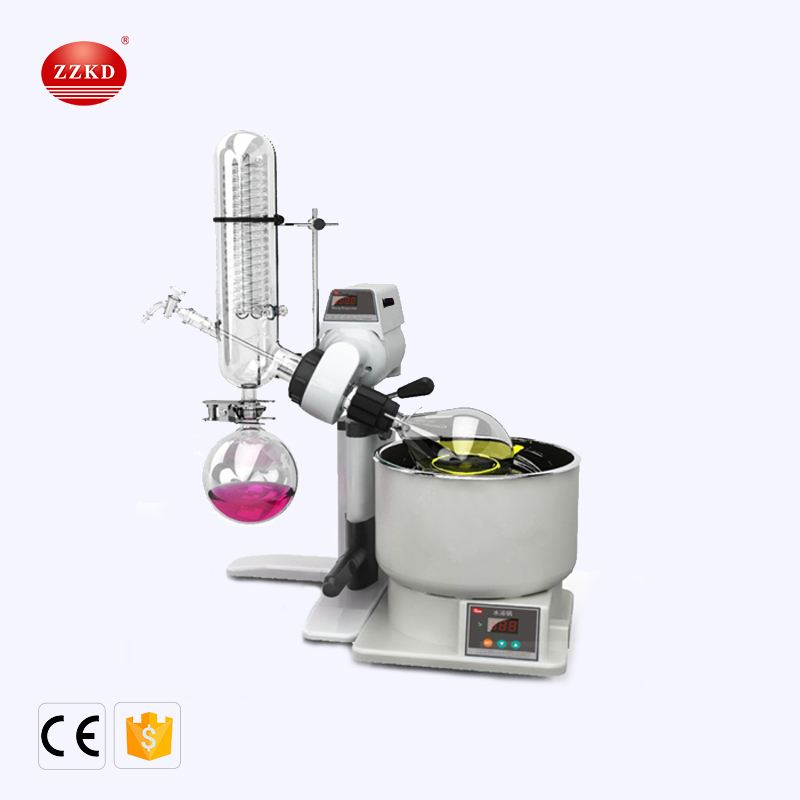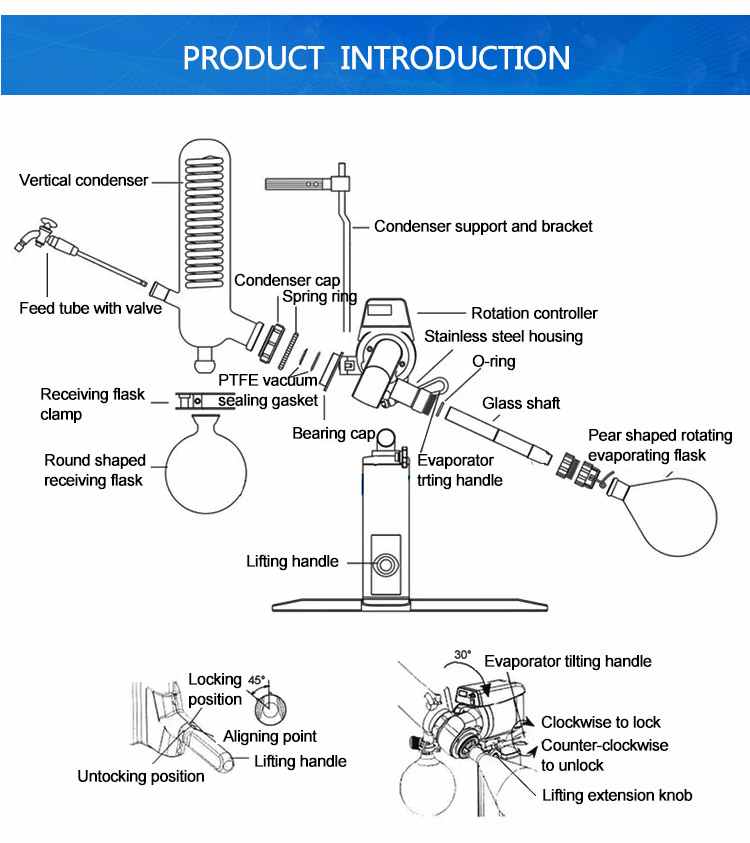Rotary evaporator ethanol extraction
What is a rotary evaporator?
Rotary evaporator is also called the rotary evaporator. It is mainly composed of: motor, distillation flask, heating pot, condenser, and other parts of the laboratory equipment.
The basic structure and principle of the rotary evaporator:
The distillation flask is an eggplant-shaped or round-bottomed flask with a standard ground mouth interface. It is connected to a pressure-reducing pump through a high reflux serpentine condenser tube. The other opening of the reflux condenser tube is connected to a receiving flask with the ground mouth. Receive the evaporated organic solvent.
There is a three-way piston between the condenser tube and the decompression pump. When the system is in communication with the atmosphere, the distillation flask and the wetted flask can be removed to transfer the solvent. When the system is in communication with the decompression pump, the system should be in a vacuum state. When in use, the pressure should be reduced first, and then the motor should be turned on to rotate the distillation flask. When it is finished, the machine should be shut down and then vented to the atmosphere to prevent the distillation flask from falling off during rotation.
As the heat source for distillation, it is often equipped with a corresponding constant temperature water tank. Through electronic control, the flask is rotated at a constant speed at the most suitable speed to increase the evaporation area. The evaporation flask is under negative pressure by means of a vacuum pump. The evaporating flask is placed in a water bath for constant temperature heating while rotating, and the solution in the bottle is heated, diffused and evaporated in the rotating flask under negative pressure. The rotary evaporator system can be sealed and reduced to 400-600 mmHg; the solvent in the distillation flask is heated with a heating bath, and the heating temperature can be close to the boiling point of the solvent; it can also be rotated at a speed of 50-160 rpm, Make the solvent form a thin film and increase the evaporation area. In addition, under the action of the high-efficiency cooler, the hot vapor can be quickly liquefied to accelerate the evaporation rate.
What is ethanol extraction?
Ethanol extraction refers to a method of separating and purifying substances using ethanol as a solvent using the solubility of ethanol. It is widely used in chemical experiments, chemical purification, chemical pharmacy and preparation of traditional Chinese medicine agents.
How to extract ethanol with a rotary evaporator?
*Set the temperature of the water bath to 60℃
*Set the speed to 80 rpm
*Set the vacuum to 100mbar
*Set the temperature of the circulating cooler to -10℃ and the pressure to 1bar
Once the set temperature and vacuum are reached, and cooling has started, you can start the experiment, loosen the feed valve, let the solution suck into the evaporating flask through the feed tube, fill with 5-10L of sample, and then close the feed valve.
At this time, condensate will be formed in the condenser coil, and the solvent in the evaporating flask will begin to evaporate. Continue until the viscosity changes and the condensation speed begins to slow down. Field tests show that the time required to evaporate a 10L sample will not More than 1 hour, and within 8 hours, can easily complete the rotary steaming of 100L samples.




